Besides the obvious info such as your level of experience with yoga, health history, and past injuries, your yoga teacher should know 5 key things before you begin a regular yoga practice.
Why is this important to your practice?
Benefits to the student:
Efficiency, performance, and safety: The Gurugrid was designed to help you improve your poses, maximize the benefits from each class, and most importantly, provide you with a guide within which you can perform your poses safely. The lines and numbers on the mat make it simple to determine these measurements, specific to your body. Once you have this information, finding the contact points on the mat is easily done and after a few classes becomes automatic.
Benefits to the teacher:
Cueing, feedback, corrections: The lines and numbers on the Gurugrid are there so the teacher can give objective cues which were previously just subjective instructions. Also, using the grid makes it much easier for the teacher to see how your body responds to the pose and give quick feedback for your individual body. Everyone hears and interprets information differently. The lines and numbers turn subjective comments into easy to follow objective directions.
Without further ado, here is the info every yogi, yogini, and yoga teacher needs to know.
1 Your Shoulder Width
The easiest and most important measurement everyone needs to know is what their shoulder width is. This is crucial information to help you not only perform your pose properly with optimum results, but to do it safely and avoid injury. This can be done with a measuring tape, or as we have recently realized, visually. There appears to be little variation in shoulder width from person to person. In designing the Gurugrid, we chose to use the distance for an adult woman. 80 – 90% of the time, it will be 14.5”, exactly the distance between the two outside lines on your Gurugrid. Men will be slightly wider and children narrower.
Visually, the easiest way to confirm your positioning is to do plank in a mirror or with someone to check. Your shoulders should be in a direct line with your wrists.
Click here for more info.
2 Your Hip Width
This one is much easier to determine. Simply make two fists with your hands. Put them together (thumb to thumb) and place them between your feet (at your toe joints). This measurement is useful in poses where your feet and knees are parallel, like Utkatasana and Camel and when your legs are extended, like Pigeon and Hanumanasana. With the extended leg poses, your legs should be positioned with their respective hips and not in one line.
Click here for more.
3 If You Know How to Properly Contract Your Pelvic Floor
The ability to keep your pelvic floor contracted will be an immense help to you in terms of balance, stability, and most importantly, safely. When your core is engaged, there is less chance of you losing your balance and falling, but the most crucial benefit it provides is protecting your lower back while you are moving from one pose to another, like jumping into plank and moving from down dog to Chaturanga. When you are concentrating on just getting the pose right, it is so easy to lose that pelvic floor contraction or Mula Bandha.
Click here to read more.
4 Where Your Asymmetries Are
Nobody is perfectly symmetrical. But knowing where and to what extent your asymmetries are is essential before you go any further in yoga. These are usually in your hips and shoulders. One is always stronger and one is always more flexible. The Gurugrid gives you the opportunity to set up your pose in a mirror image formation. When the pose is set up identically on the right and left side, it becomes obvious in terms of how it feels as well as how it looks, which side needs more attention. If you are not practising mirror imaging, you could be doing more harm than good to your body over time.
Click here for more.
5 Proper distance for Down Dog / Plank / Chaturanga / Child’s Pose (hand and foot placement)
This is my most recent epiphany - you are going to love this one!
It is a really easy measurement to find and really useful to know.
Simply, position yourself in and nice straight Child's Pose. Take a good stretch so you feel it a bit under your arms, but not so much that you are exerting too much energy. Notice where the toe joints (the other side is the balls of your feet) fall in relation to the palm of your hand just below your fingers. (Does anyone know what this is called?) These are your ideal contact points for all four poses and technically, there is no need to reposition. Now, the key here is that this works if you are able to obtain full extension of your lower legs and position your heels directly over your toes in Plank and Chaturanga. If you are lacking flexibility in your claves, you may have to play with your individual positioning until you find the right one for this stage in your development.
The important thing here is that you are not shifting too much weight into your upper body. As you push the weight back toward your feet, you will reduce the strain on your shoulders and Chaturanga will be a lot easier and safer.
Once you both know these 5 basic points, you are off to a good start. Your teacher can easily spot if you are off-kilter and quickly correct you using the lines and numbers on your Gurugrid.

Leave a comment